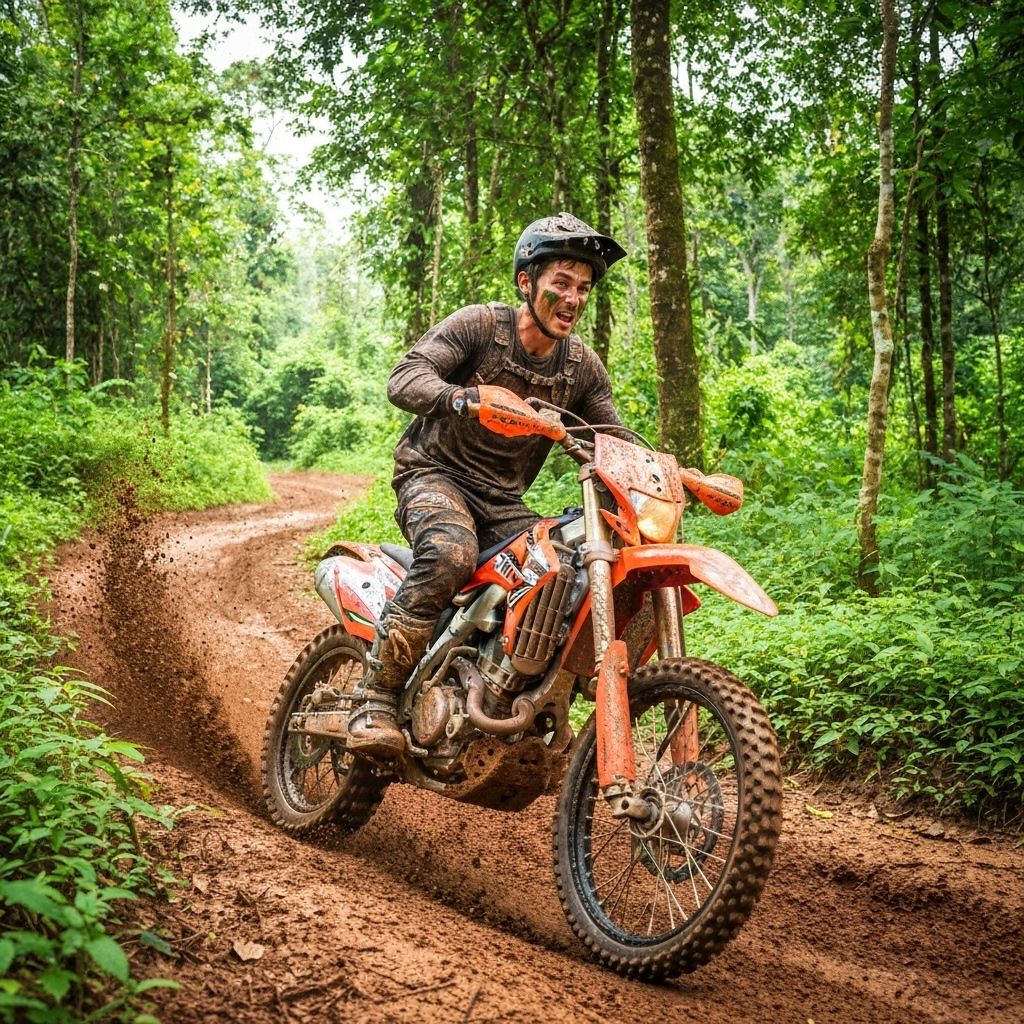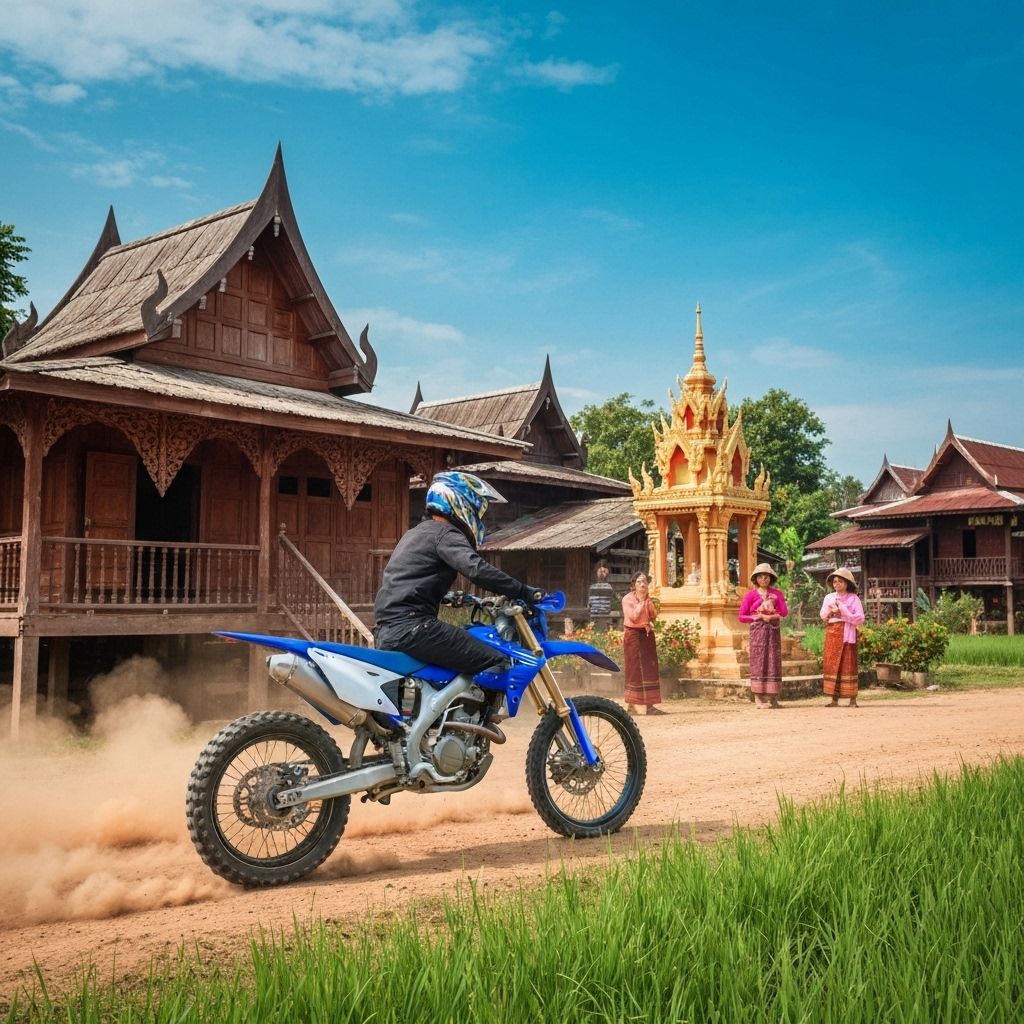Riding in Northern Thailand
Northern Thailand is a paradise for dirt bike enthusiasts, offering over 20,000 square kilometers of diverse terrain. From the cool mountains of Chiang Mai to the remote valleys of Mae Hong Son, the region provides year-round riding opportunities with breathtaking scenery at every turn.
Climate & Weather
Loading chart...
- •Best riding season: November to February (cool and dry)
- •Avoid heavy rain season: June to October
- •International Driving Permit required
- •Travel insurance highly recommended
- •Stay hydrated and protect from sun
- •Respect local communities and wildlife
- •GPS device essential for remote areas
- •Carry basic tool kit and spare tubes
The terrain varies dramatically from technical single-track jungle trails to flowing mountain roads. Elevations range from 300m in the valleys to over 2,500m at the highest peaks. Expect everything from muddy forest tracks to rocky mountain passes.
Northern Thailand's hill tribe communities are friendly and welcoming to respectful visitors. Many villages are accessible only by dirt bike, offering unique cultural experiences. Always ask permission before entering villages or taking photos.
Major Riding Regions
Loading map...
Planning Your Trip
When to Go
The ideal riding season in Northern Thailand is from November to February, when temperatures are cool (15-25°C) and rainfall is minimal. This is peak season, so expect more tourists and higher prices. March to May is hot (30-35°C) but still rideable, especially in the mountains. June to October brings heavy rains, making some trails impassable but offering lush scenery for adventurous riders.
Route Planning
Start with easier routes around Chiang Mai to acclimate to local conditions. Popular loops like Samoeng (100km) or Mae Rim (80km) offer excellent introductions. Build up to multi-day adventures like the Mae Hong Son Loop (600km) or cross-province tours. Always carry GPS, offline maps, and share your route with someone.
Safety Considerations
Road conditions vary dramatically. Paved roads can have loose gravel, while dirt trails may feature water crossings, mud, and steep inclines. Wear proper gear (helmet, boots, gloves), carry a first aid kit, and ride within your skill level. Cell coverage is spotty in remote areas. Consider hiring a local guide for unfamiliar terrain.
Accommodation & Fuel
Most towns and villages have basic guesthouses (฿300-800/night). Larger towns offer more variety. Fuel stations are common on main roads but sparse in remote areas. Always fill up when you see a station, and consider carrying a spare fuel bottle for long stretches. Villages often have small shops selling gasoline from bottles.




